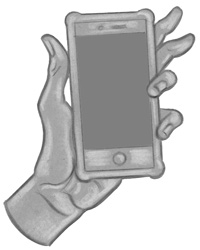 News
News12 December, 2023
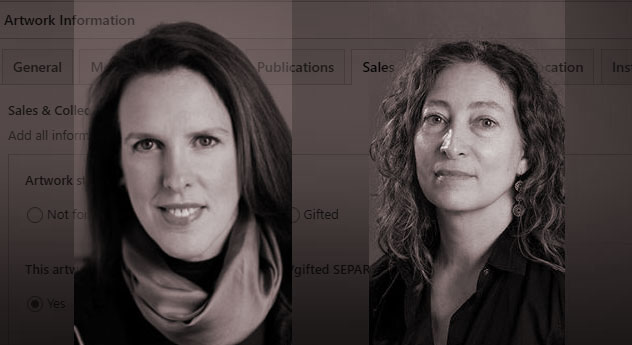
AOPA had two very constructive critiques of our Retrospective database design yesterday with a NYC art advisor and Montreal McCord Museum’s conservator.
We will be implementing the improvements they suggested, which were overlooked in the preliminary design. The database for archiving artworks is the foundation of the Retrospective platform. We want it to be as solid as possible for the launch later next year.
Sarah Greenberg Morse brought her experience as an art advisor working with collectors and estate executors in NYC and beyond to AOPA’s Retrospective platform. Her comments were great, with several useful suggestions that will improve the information collected for artworks in terms of sales, collections and legacy information. I was nervous but so happy to have her eyes on our data design!
Before becoming an art advisor, Sarah Greenberg Morse founded and directed two contemporary art galleries in SoHo. She is an Associate Candidate of the Appraisers Association of America, USPAP compliant through March 2025.
Here are some of the improvements that we will make following her feedback:
Sara Serban brought her vast experience as a conservator to AOPA’s Retrospective platform. Her focus was a critical look at our fields for condition reports, location and authenticity information.
Before taking on her current post at the McCord Museum, Sara also worked at the National Gallery of Canada and the Musée d’art contemporain de Montréal. In addition, she has worked for the Centre de Conservation du Québec, working on various works of public art around Montréal. She graduated from the Master of Art Conservation Program at Queen’s University, Kingston with a specialty in Objects Conservation in 2007.
Here are some of the improvements that we will make following her feedback:
We have two more consultations planned. But for now, I’m off to make those changes to the database and our page templates!
..
24 November, 2023

The design vocabulary for AOPA’s Retrospective platform takes the last 50+ years of print publications in the art world as a primary reference: specifically the rich design conventions of contemporary art catalogs and artist monographs.
With the recent and most happy addition of the accomplished freelance designer Alex Tench to the AOPA team, the visual design process has begun. Our objective is to create a basic classic graphic theme for Retrospective that will be available to all our clients. The point of departure for this work was a concentrated round of research.
Last week, Alex went on a field trip to the Emily Carr University of Art + Design library and Don did the same at Artext and the Université du Québec à Montréal’s Bibliothèque des arts. We perused many dozens of contemporary art catalogs, from the 1970s to the present, with the intent of distilling out recurring design choices.

We quickly found that there were many best practices for presenting information and images that the unsung army of talented and committed art-publication designers have returned to over the years. We identified the visual treatments that made the content easy to understand and read, and that struck the eye as looking fabulous and beautiful. Then we gave consideration to which of these design conventions showed promise in making the transition from paper to screen. What’s relevant on the physical page does not necessarily translate to monitors or mobile devices.
Before getting into the research findings, this is a good place to reiterate a fundamental principle that is applied to all AOPA’s design work, whether it is visual or in terms of usability. We take as a given that our design decisions must not only put the artwork first, but also must enhance, where possible, users’ understanding of the artist’s creative project. We want people to leave feeling they are closer to the artwork.
For graphic design this means it must, in most cases, be quiet, sit back. It should only come forward if a bolder graphic treatment makes sense for the artist’s work. The design is in the service of the art, not vice versa.
Here are some of the findings that Alex put together, which will guide his design work on the classic Retrospective theme…
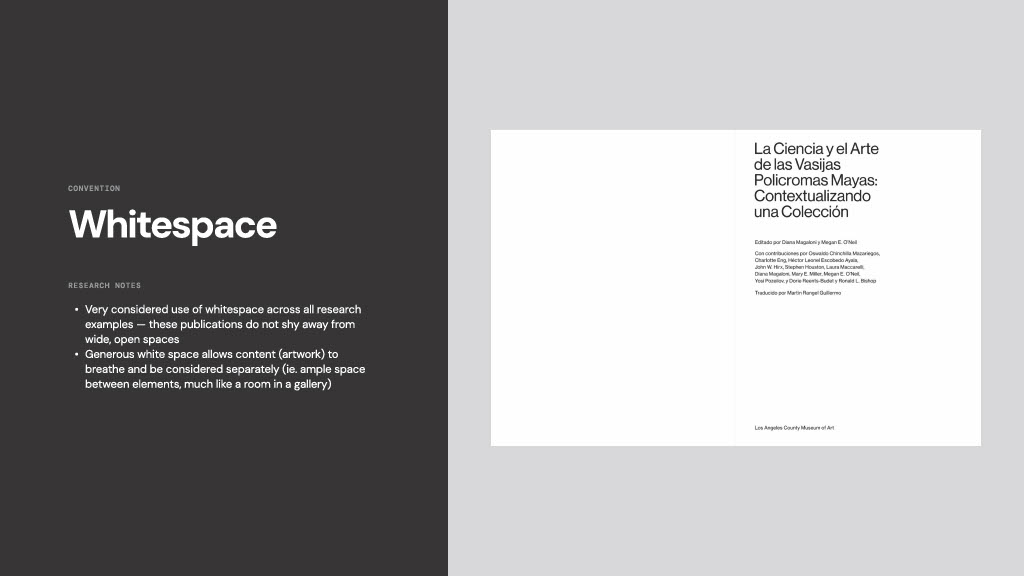
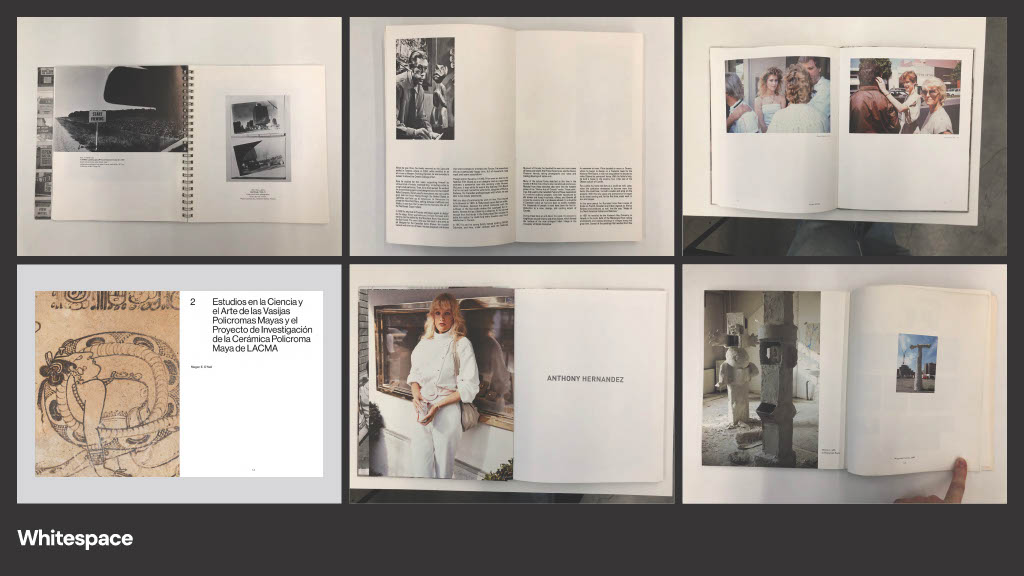
Convention: White Space (examples)



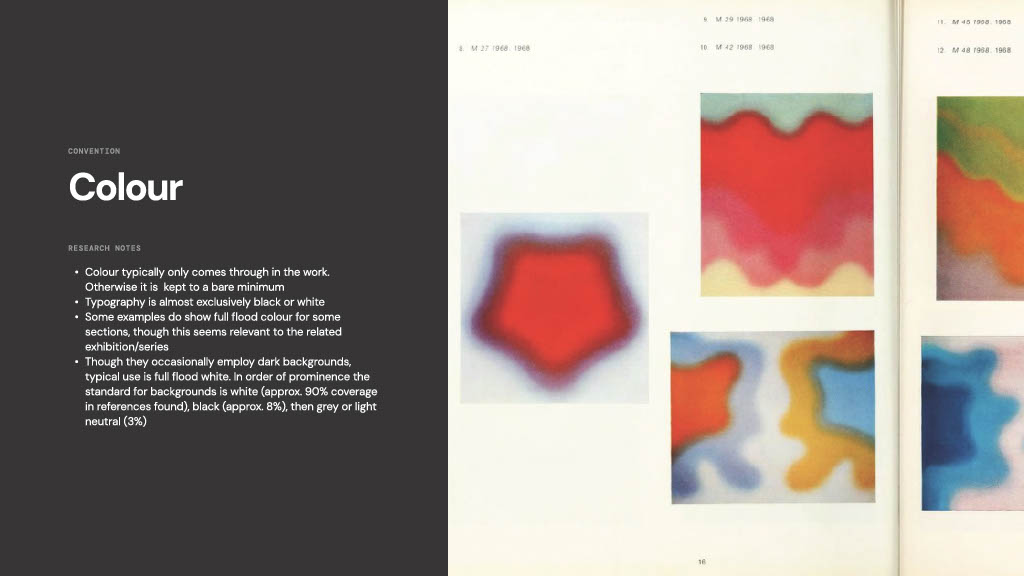

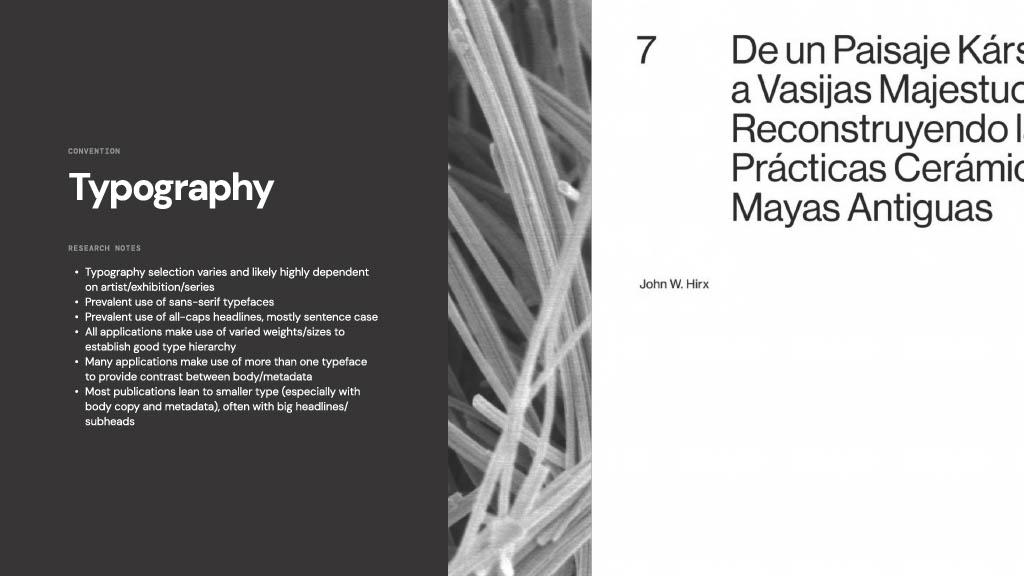
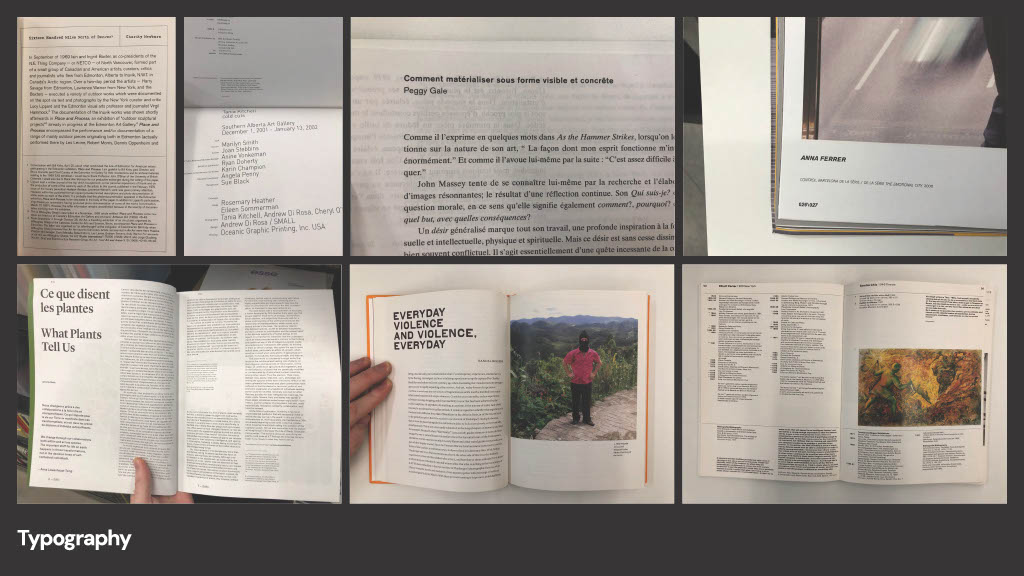
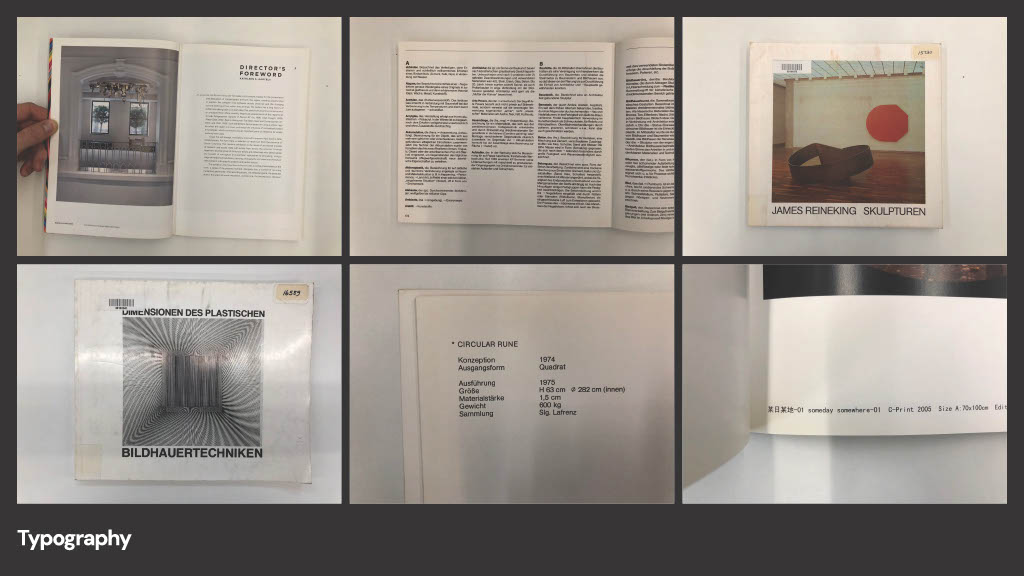
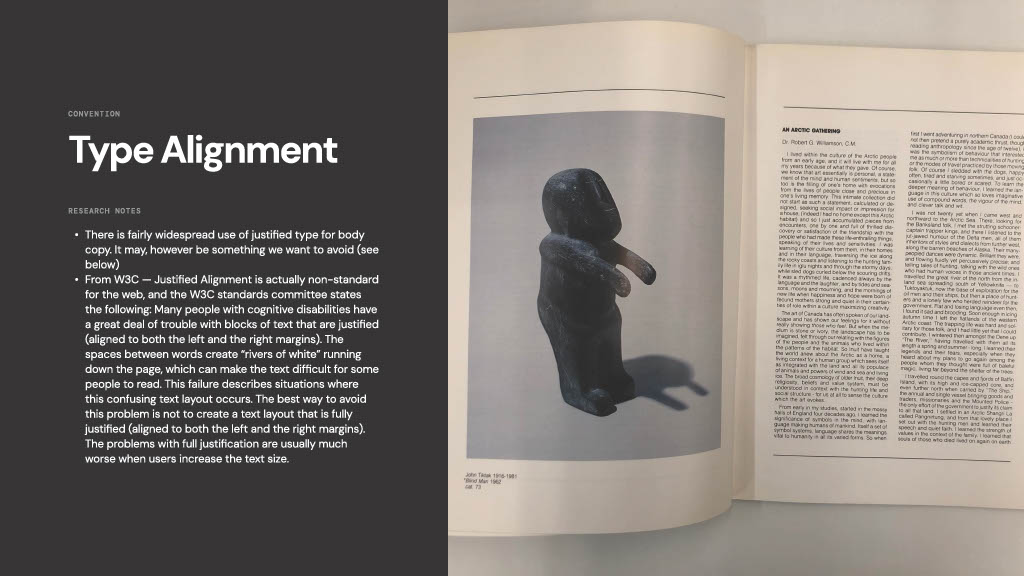
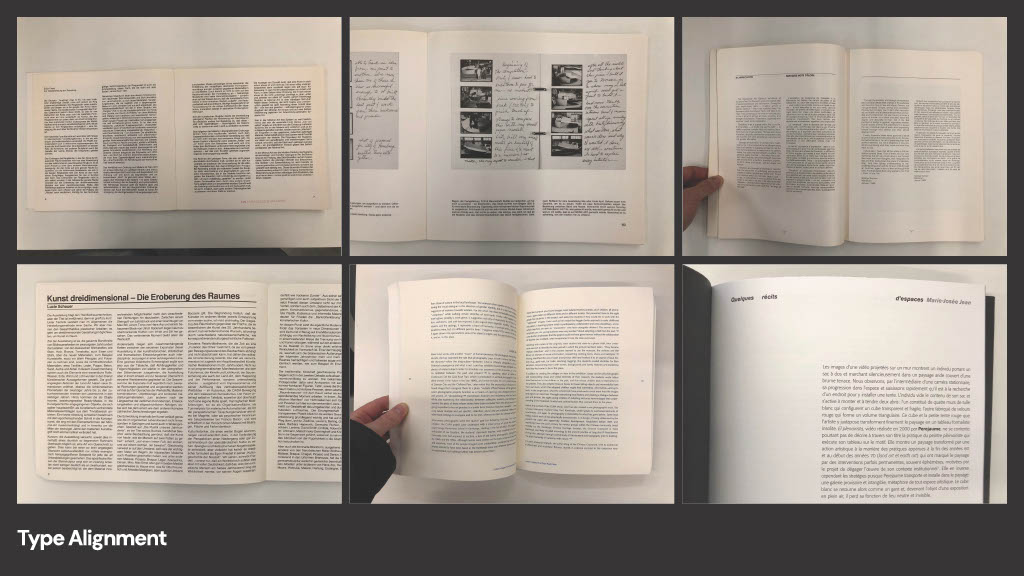
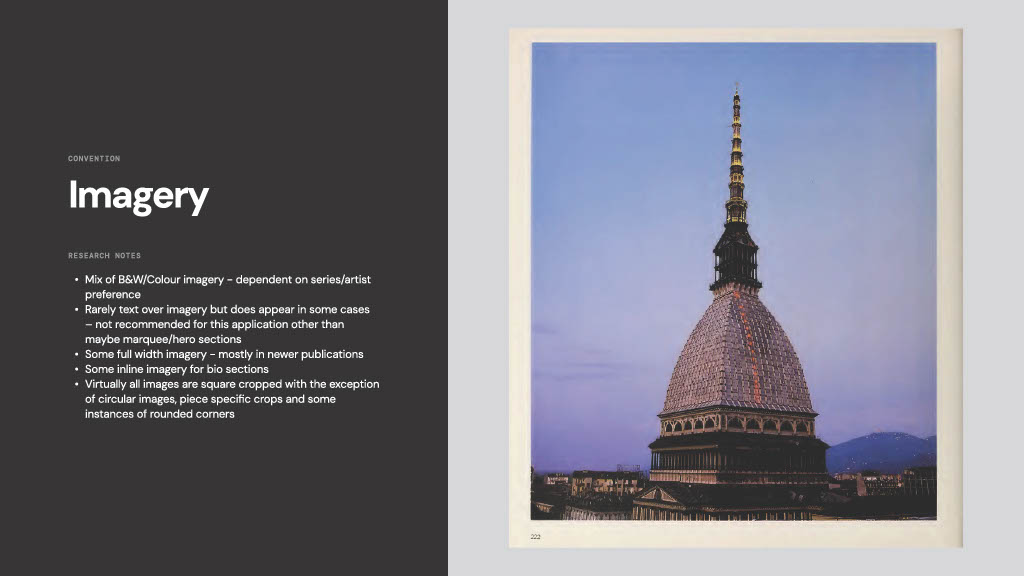
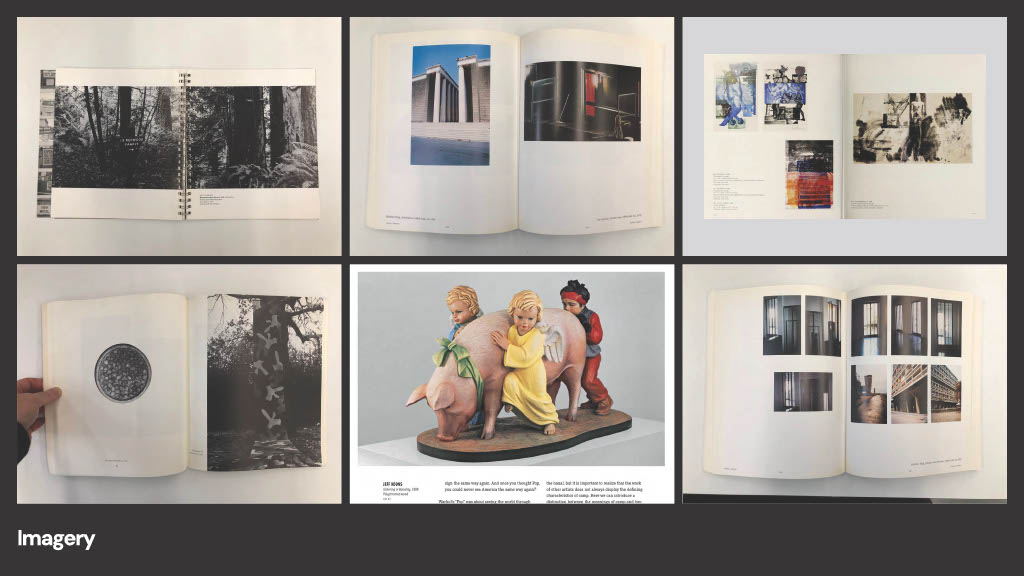
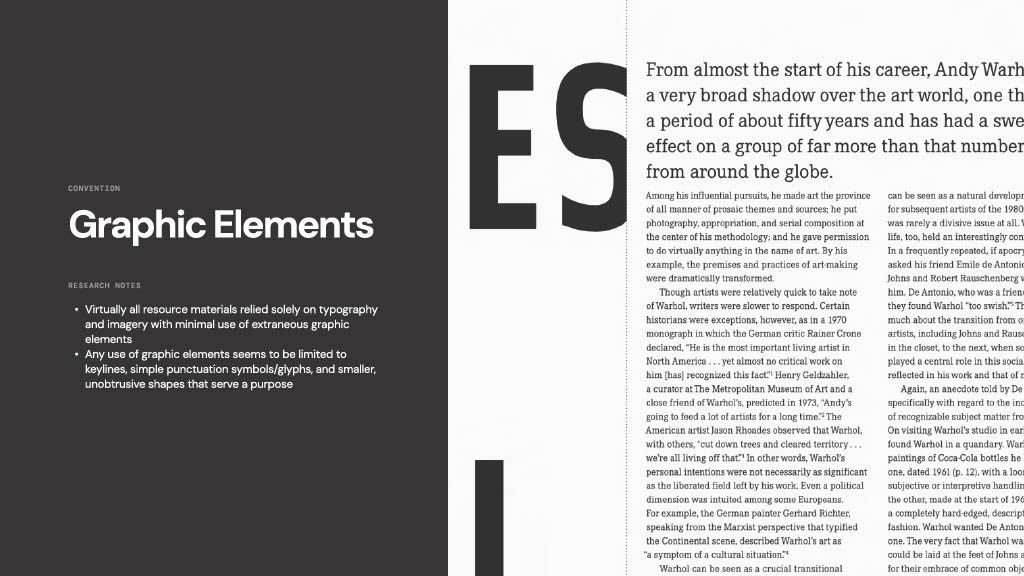

29 June, 2023

I recently consulted ChatGPT regarding effective techniques for structuring text data in WordPress to enhance accessibility for its AI language model. I thought I would share what I learned.
We want Artist Online Presence and Archiving’s (AOPA) Retrospective platform, which is being built on WordPress, to respond to the needs of these new natural-language search tools such as ChatGPT, and the many competing alternatives appearing out there. Their learning starts with information gleaned from the internet. So, we want the content of the online retrospectives we create for artists to be accessible when a user out there asks a question related to their art.
Let’s see how the AOPA’s Retrospective platform stands up…
ChatGPT finds it easier to access different types of data when Custom Post Types are used in a WordPress theme. Custom Post Types are a core function of WordPress. A Custom Post Type is a data object with its own metadata (i.e. custom data fields). The first iterations of AOPA’s Retrospective Platform will use “Artwork”, “Artist” and “Series” custom post types, with more planned for the future. Each of these provides a comprehensive list of custom data fields to describe, for example, artworks, (including: medium, dimensions, duration, style, exhibition history, collections, description and statement). These can be easily parsed by ChatGPT. AOPA is on the right track.
ChatGPT finds it easier to understand different types of data when taxonomies are used in a WordPress theme. Taxonomies are systems of classification and again are a core feature of WordPress. The AOPA Retrospective platform starts with fundamental taxonomies such as “artwork type” (e.g. painting, drawing, performance, installation, etc.). But, any custom taxonomies that are appropriate to the grouping of works in an artist’s oeuvres can be added. For example “themes” shared by certain works, groupings by “chronological periods” or “subject matter”, all of which will help ChatGPT understand and learn from the content.
AOPA Retrospective platform is designed using a robust data model, with the many custom data fields mentioned above. Structured markup allows us to add additional information via a json script (i.e. JSON-LD) or by adding it directly into the html code in our templates (i.e. Microdata). Both help ChatGPT better understand the content and the context of information in an artist’s online retrospective. As well, both options facilitate the accurate retrieval of information.
Senior WordPress developer, Valeriu Tihi, and myself recently met to discuss the structured markup solution that will serve us best, as we design the data base and begin programming the core templates for the Retrospective platform.
We are leaning towards the Microdata solution for several reasons. JSON-LD separates structured data from HTML, which in some cases can be a plus, but not in ours. It increases page load time and limits the level of control we have over how content is rendered on the page. Both visual design and fast-loading pages are important to AOPA.
Microdata integrates directly into the html and provides more control over rendering. It offers a VisualArtwork schema with properties that correspond to those we are using in our Custom Post Types.
Microdata offers AOPA a winning combination: attractive design… and the benefits of an actively maintained and supported standard, that is used to markup a vast amount of content across the web, and in which search engines are invested in understanding and using.
The AOPA Retrospective platform limits the use of any unessential WordPress plugins for many reasons: they can create conflicts, need to be updated, can stop being supported and add lots of extra code. In short, they slow things down and can break websites at any time.
ChatGPT suggests using WordPress plugins designed for structured data, such as Yoast SEO or Schema Pro. But we don’t need them. AOPA will achieve everything that we need these plugins to do directly in our templates, using way less code. The outcome is to keep things as simple and as streamlined as possible, while providing ChatGPT the structured content it needs all the same.
(update: Valeriu made a strong case for using Yoast SEO in our platform, He argued that the functionality it offers is worth the maintenance, and furthermore, it should not add to load times once pages are cached. So we will be using it for the first iteration.)
ChatGPT encourages doing the work of creating a technical reference document that:
Why? ChatGPT won’t read it! It’s for us. Documentation provides a reference for current and future development that ensures consistency. ChatGPT likes consistency and so does APOA.
Finally, ChatGPT also pointed out an important byproduct of structuring content for its searches, which offers AOPA and our clients some powerful possibilities.
Properly structured data from the AOPA Retrospective platform can be made available to other platforms using an API (application programming interface). In the future we could develop a custom API endpoint in WordPress specifically for retrieving artwork data. This endpoint could be designed to accept parameters such as artwork ID or category to fetch specific artwork details.
So, for example, the data from all AOPA online retrospectives could be made available, with permission, to a mobile app that provides information on contemporary artists in Canada, or from around the world. Or we could create a website specifically designed for curators that would present the artworks of AOPA clients according to the criteria they select. In other words, the AOPA online retrospective is only one of many potential manifestations of our artists’ content in the digital sphere. Once the data is entered and structured, the sky’s the limit.
I think we can all agree that AI search engines are an exciting new way to interact with the internet that will, at the very least, complement keyword searches in Google that have become second nature to us. Search engine optimization (SEO) is already built into the creation of all AOPA retrospectives. Our commitment is to ensure your content is relevant into the future. Structuring data for ChatGPT and other ChatAI searches is one of many ways we do this.
I can’t end without sharing an article that I found in researching this post that I found interesting because it cut trough the hype surrounding artificial intelligence.
It is by Gary Smith, an economist and professor of economy who has written several books on AI and data science. In his article “An AI that can write is feeding delusions about how smart artificial intelligence really is” (salon.com 2023), Smith points out: “AI algorithms have an unrivaled ability to spot statistical patterns but have no way of distinguishing meaningful patterns from meaningless coincidences.” To prove his point he tells us about an AI investor program launched in 2017 that was shut down in 2023 because it had a -10% return, 70% lower than an average indexed fund.
In other words, while ChatGPT can “string words together in a convincing way”, it does not understand the meaning of those worlds. “Predicting that the word down is likely to follow the word fell does not require any understanding of what either word means — only a statistical calculation that these words often go together.” According to Smith “Large Language Models (LLMs) like GPT-3 do not use calculators, attempt any kind of logical reasoning, or try to distinguish between fact and falsehood. They are trained to identify likely sequences of words—nothing more.”
It is not magic (well it kind of is, :-). When I asked ChatGPT “Who are Janet Cardiff and George Bures Miller, and what is their art about?” I get a decent five paragraph answer using the information about her found by ChatGPT on the internet. But if one wants to go deeper, where will we look? To her and George Bures Miller’s website.
choose your preferred method of communication